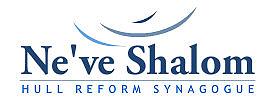1564 Scrolls, A Legacy of Jewish Life in Bohemia and Moravia
In WW2, as Jewish life all over Europe was threatened, the old Jewish communities of Bohemia and Moravia sent their Torahs and all other Jewish texts and artefacts to the Jewish Museum in Prague. Sadly, at the end of the war few Jewish people remained, after being sent to concentration camps. It was thought that the Nazis intended to use what was in the Jewish Museum to create a museum of the 'extinct race'.
After the war some fifty Jewish congregations re-established themselves in the Czech Republic and were provided with religious artefacts, not necessarily from their own communities. When the Communists took over the government of the country in 1948, Jewish communal life was again stifled, and most synagogues were closed. Their possessions went to the newly re-founded Jewish Museum of Prague. The scrolls were transferred and warehoused in the ruined synagogue at Michle outside Prague where they remained until they came to London in 1964.
At Hull Reform Synagogue, we are lucky enough to hold two of these scrolls MST#319 and MST#231. Our scrolls are sadly Orphan scrolls, meaning that we do not know the specific town from which they came, however we do know that they were from Bohemia and Moravia. Our scrolls are on permanent loan from The Memorial Scrolls Trust in London.
To find out more, please visit www.memorialscrollstrust.org
|



